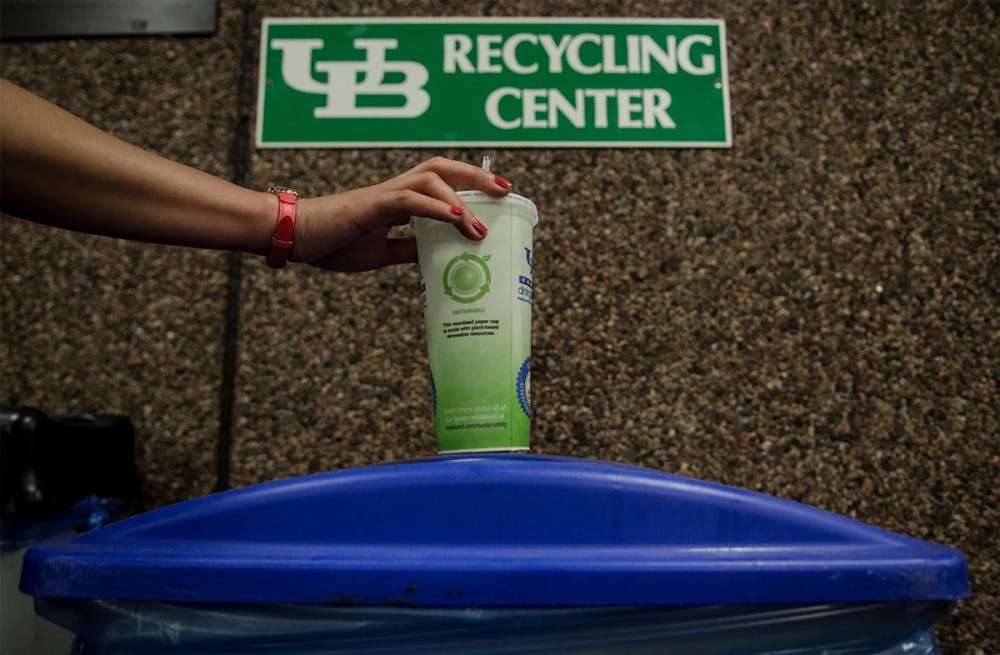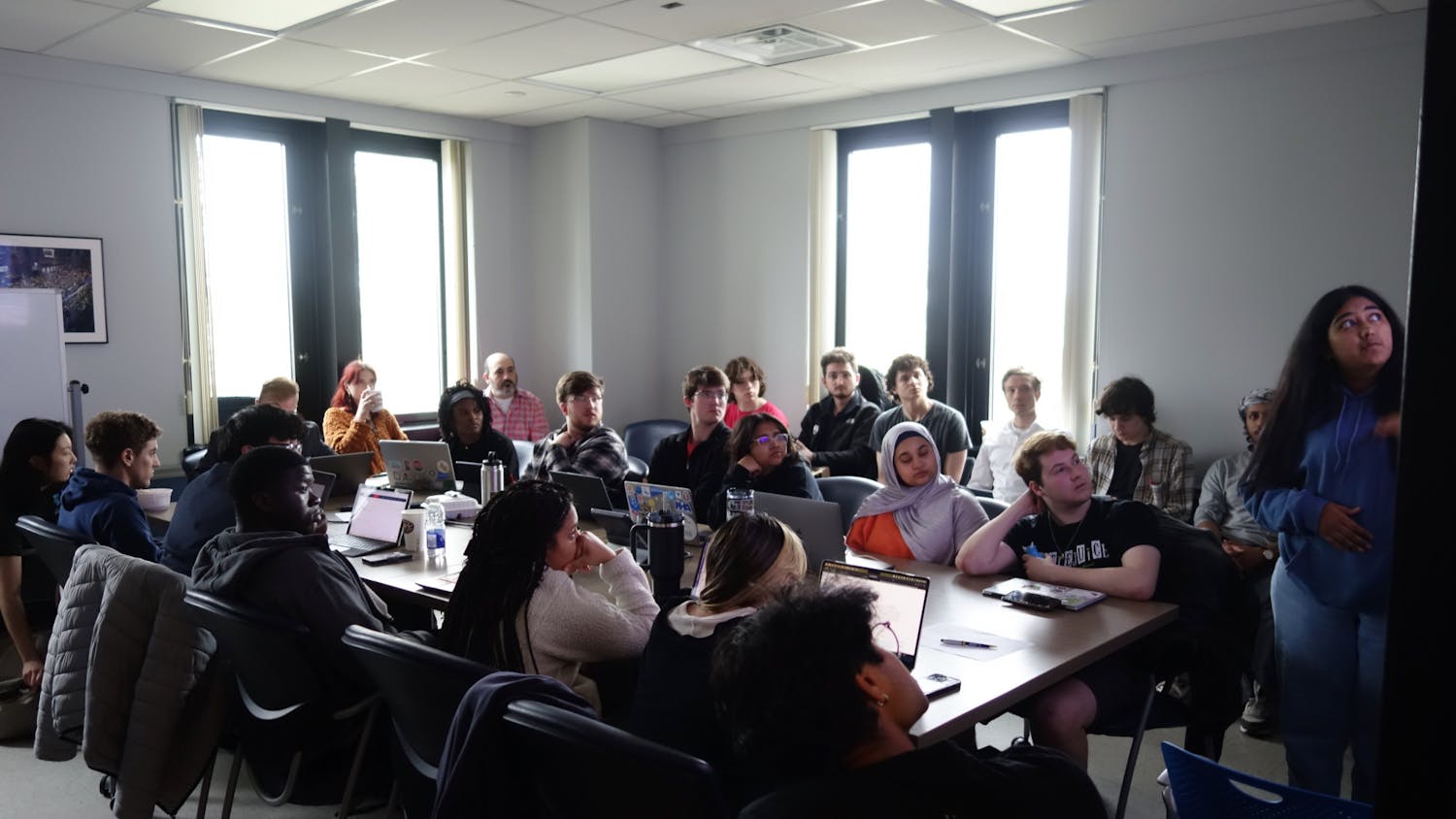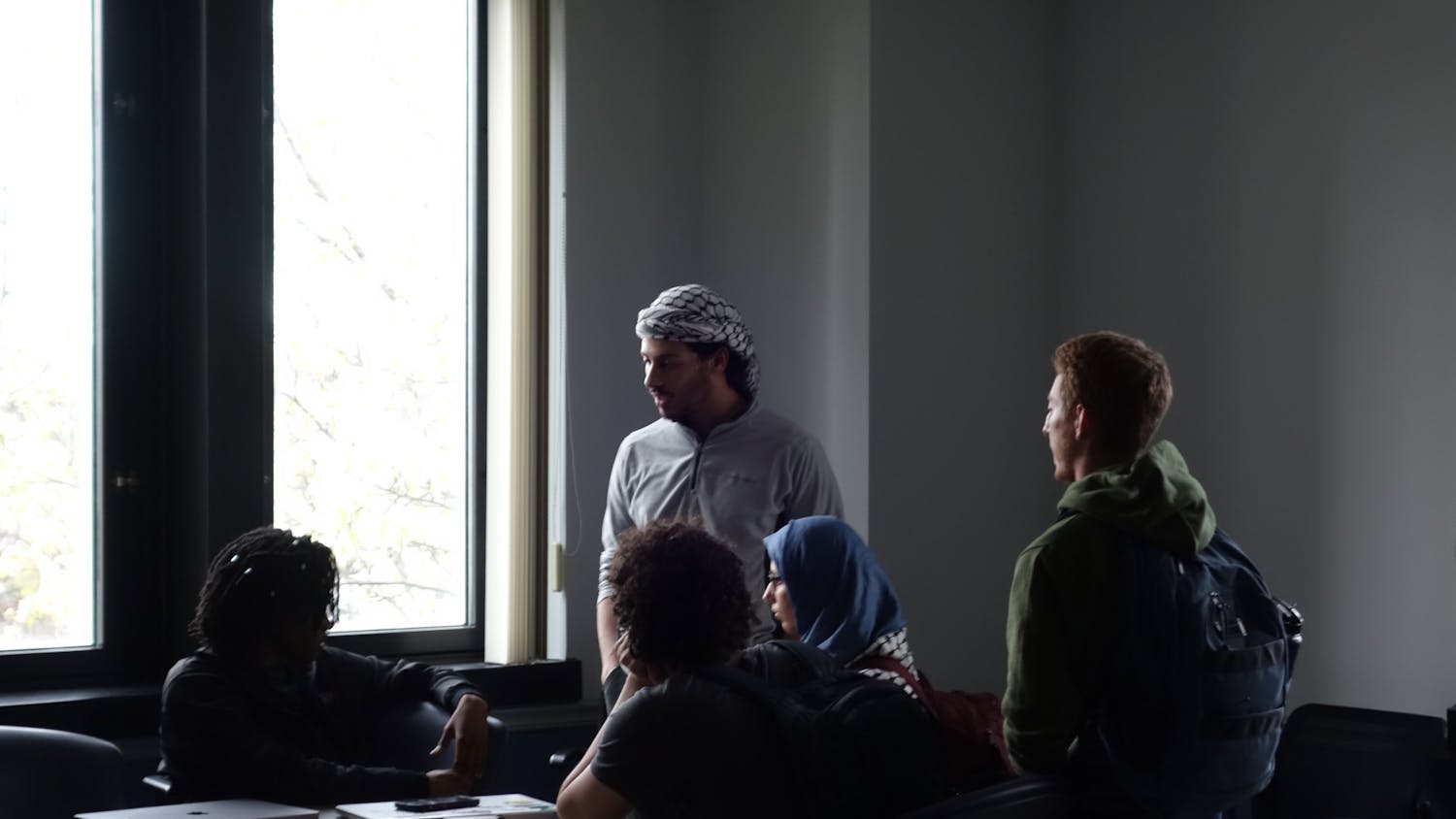UB has posters plastered around its campuses advertising a plan to become climate neutral by 2030.
UB Sustainability aims to meet that goal.
As an organization on campus focused on teaching students and faculty how to make environmental changes, UB Sustainability has developed a climate action plan designed to make UB climate neutral by 2030. UB’s goal to become climate neutral is not based solely on education, but innovation, according to UB’s Chief Sustainability Officer Ryan McPherson. Reducing the carbon count, altering the composting process and promoting recycling are just a few steps closer to the 2030 goal.
McPherson said that 2030 is “about the fact that we’ve committed to become climate neutral and we’re working to create a better tomorrow.”
One of the first steps of the plan is getting the carbon count down to 350 parts per million. Currently, this number is about 400. Reducing the carbon count means reducing the amount of carbon dioxide in the atmosphere, according to UB’s sustainability website. Because humans mainly generate carbon dioxide, reduction is an achievable goal, McPherson said.
UB has also changed the way food is disposed. At Culinary Crossroads Center (C3) and Goodyear dining hall, 100 percent of pre- and post-consumer waste is composted. This means all food waste from the dining halls eventually makes its way to a digester to be dehydrated and converted to nitrogen-rich compost. From there, it is used on campus and beyond as fertilizer.
The composting effort, however, is limited to the couple of dining halls on campus.
“We are definitely not there yet,” McPherson said. “We have progress to make in that area.”
The ideal situation, according to McPherson, is to avoid any unnecessary food reaching a landfill. But that’s an unsolved problem.
McPherson said there is a behavioral and cultural piece to sustainability along with technological implementation. The behavior piece is how we get people to think about putting something in its rightful place, he said. As for the implementation, it is about getting trash out in an efficient manner. For example, students shouldn’t leave food around because it attracts all sorts of vermin, McPherson said.
Jon Hodgson, a freshman environmental engineering major, praised these efforts.
“[UB is] doing some good things,” Hodgson said. “In C3 and other dining halls, they have the rivers that you can compost with.”
But Hodgson also expressed discontent. He said central buildings should have more recycle bins.
Jackie Zeder, a freshman biochemistry major, also said there is not enough enforcement regarding waste disposal policies.
Zeder questions how effective the plan will be since she still sees people smoking and cigarette butts on the ground even though UB is a smoke-free campus.
Another large effort made by UB Sustainability is the Leadership in Energy & Environmental Design (LEED) certification. This is a rating based on how “green” a building is based on the eco-friendly materials used to build them.
The Creekside apartment complex was the first LEED certified building constructed for UB. There are eight other LEED certified buildings on campus, including the Center of Excellence in Bioinformatics and Life Sciences and the latest addition, Kapoor Hall on South Campus.
There are four levels in the rating system: certified, silver, gold and platinum. Each level has a different amount of points. According to McPherson, UB isn’t going to build anything less than gold standard.
Current Gold buildings include Davis Hall and Greiner Hall, which was SUNY’s first LEED gold-rated residence hall.
The medical school, currently under construction in downtown Buffalo, is planned to meet this same standard. This expectation is supported because the school will be built onto a subway station.
“The subway goes directly into that building so that you don’t even have to go outside to get to the new School of Medicine from South Campus,” McPherson said.
The availability of public transportation in this building adds lots of points to its ranking since it encourages environmentally friendly behavior, he said.
Within the next 15 years until the goal is met, UB plans to continue educating people on all aspects of becoming a climate neutral campus.
“We think about how we might create sustainably literate students, teachers and staff through our teaching and our experience,” McPherson said.
Michael Joncas is a staff writer and can be reached at news@ubspectrum.com





